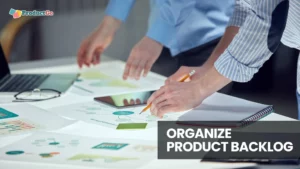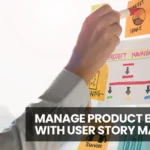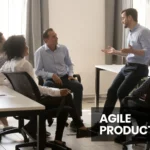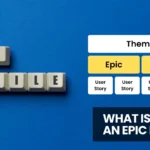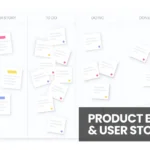Planning a remarkable event demands more than meticulous schedules and polished presentations. It’s about understanding your audience, anticipating their needs, and crafting a journey that resonates long after the final curtain falls. This guide delves into the intricacies of event planning, equipping you with powerful tools and strategies to elevate your gatherings from ordinary to extraordinary.
Table of Contents
I. The Fundamentals of Event Planning
At its core, event planning starts with defining clear objectives to shape decisions, from venue selection to activities. A well-planned budget is crucial, encompassing all costs from venue to entertainment, ensuring aspirations align with financial limits. Choosing the right venue matches the event’s theme, size, and technical needs.
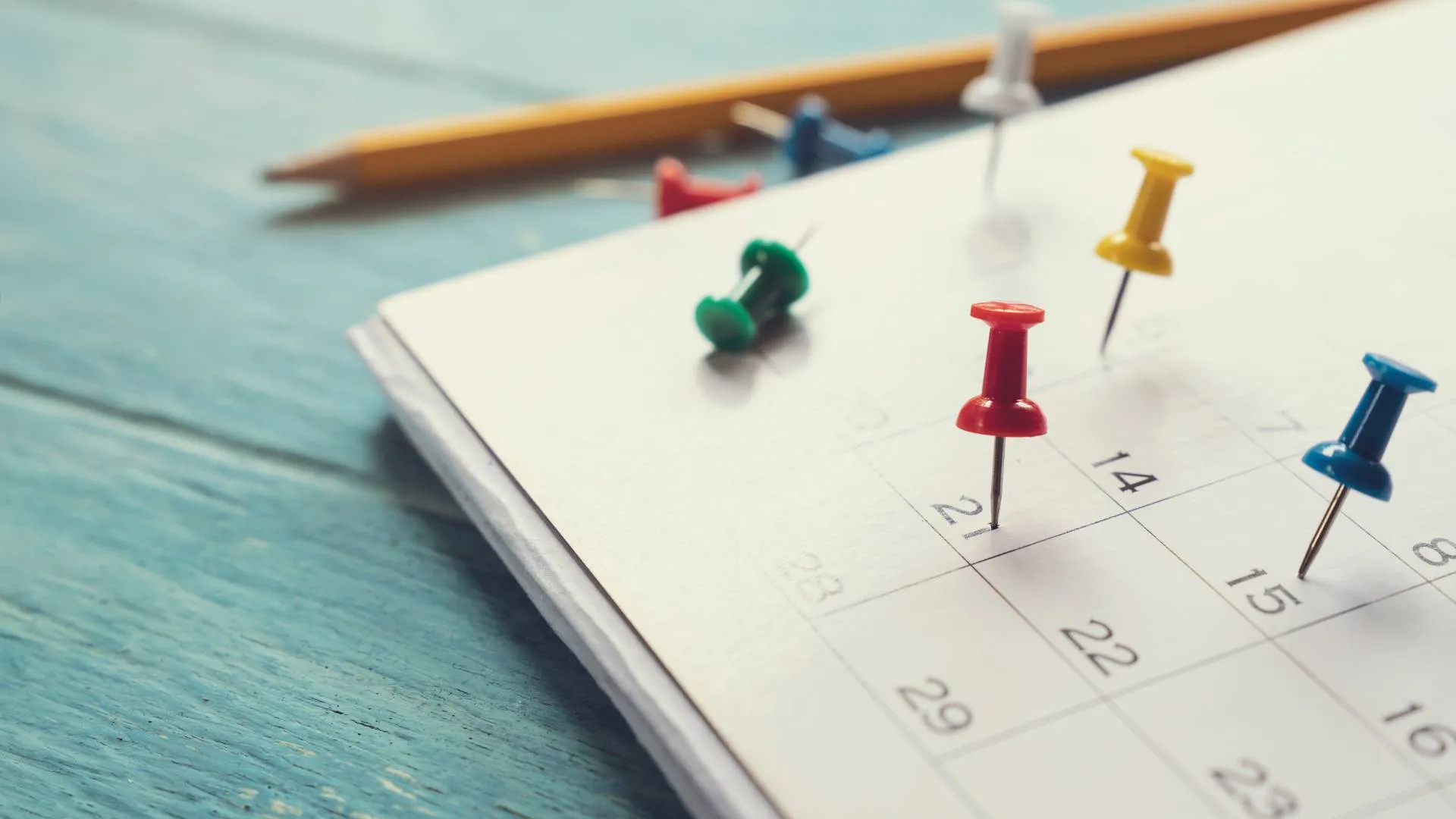
Effective marketing is essential for attracting attendees and utilizing social media, email, and possibly traditional media. Smooth registration management is also vital. On the event day, focus on logistics, vendor coordination, and schedule adherence. Post-event, gather feedback for future improvements.
Successful event planning hinges on clear goals, prudent budgeting, strategic venue choice, targeted marketing, efficient registration, seamless day-of execution, and insightful post-event analysis. Each step is interconnected, ensuring a cohesive and well-managed event.
II. Utilizing User Story Maps in Event Planning
User story mapping is an innovative approach that can transform event planning by providing a clear and structured way to organize and execute an event. Here’s how it can be effectively utilized:
- Breaking Down the Event: Start by dividing the event into critical components or “stories”. These could include registration, sessions, networking, and entertainment. This breakdown helps focus on each part of the event individually, ensuring thorough planning and execution.
- Prioritizing Attendee Experience: The map should be centered around the attendee’s journey. By envisioning the event from their perspective, planners can tailor the experience to meet their expectations, leading to greater satisfaction and engagement.
- Enhancing Team Collaboration: The visual aspect of a user story map encourages teamwork. It gives everyone a common reference point, making it easier to understand and contribute to the event’s objectives. This shared understanding is crucial for seamless coordination among all involved.
- Adapting to Changes: In event planning, flexibility is critical. User story maps allow planners to adapt to changes quickly. If a new requirement or challenge arises, the map can be updated to reflect these changes, ensuring the event stays on track.
- Evaluating Event Success: After the event, the user story map serves as a tool for reflection and analysis. It helps in identifying which aspects were successful and which need improvement. This insight is invaluable for enhancing future events.
Example of using User Story Map in Event Planning:
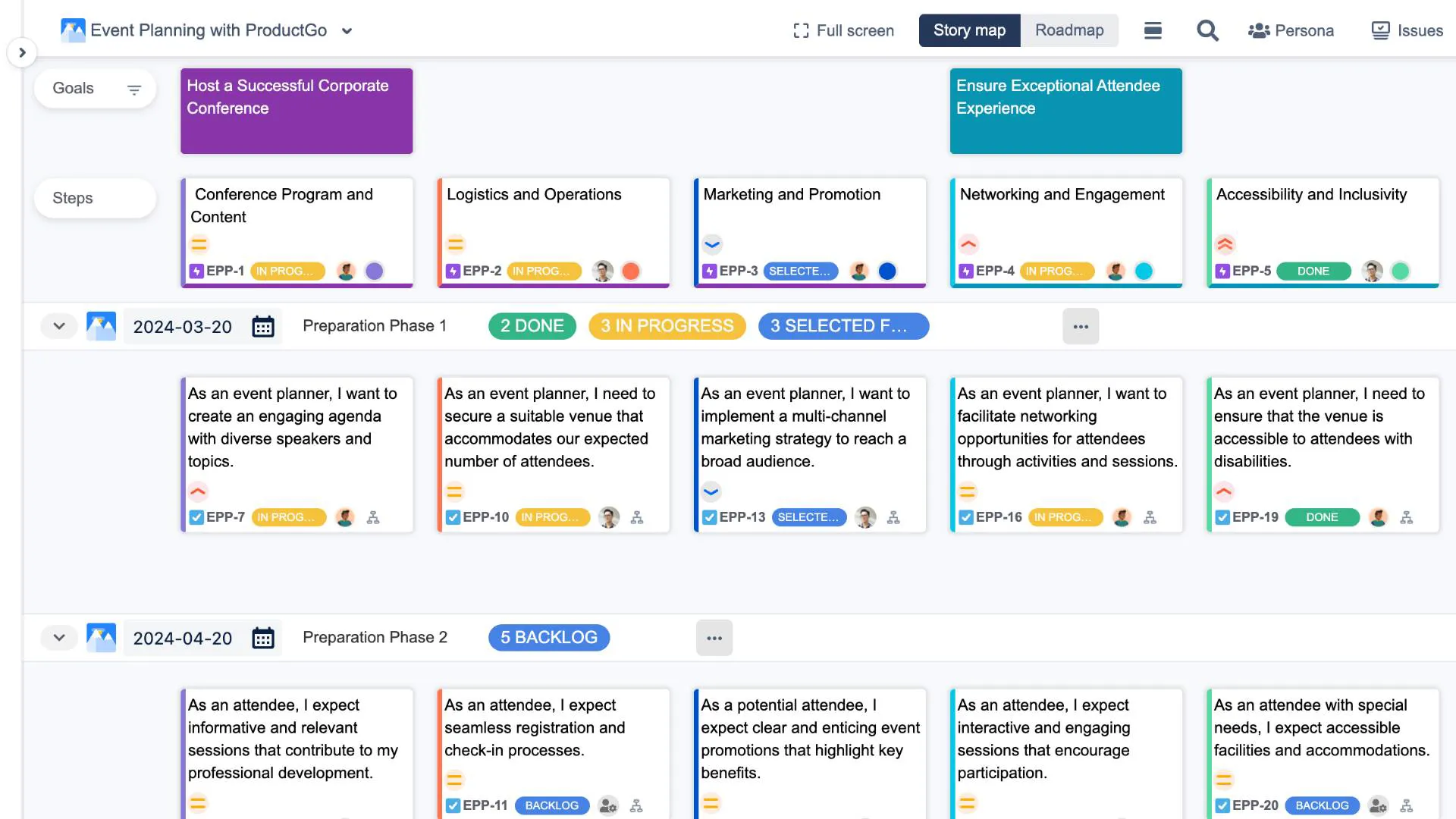
→ Check out our solutions: Event Planning
By integrating user story maps into the planning process, event organizers can create more effective, attendee-focused, and adaptable events. This method streamlines the planning process and elevates the overall event experience.
III. Crafting a Roadmap for Your Event
A roadmap in event planning is a strategic plan that outlines the key steps and milestones leading up to an event. It’s like a detailed guide that shows the path from the initial planning stages to the final execution.
The importance of a roadmap lies in its ability to provide clarity, direction, and a sense of order. It ensures that every aspect of the event is thoughtfully planned and executed on time. A well-crafted roadmap is a compass for the planning team, keeping everyone aligned with the event’s goals and timelines.
Creating Your Event Roadmap
Creating an event roadmap involves a strategic and organized approach to ensure your event unfolds smoothly and successfully. Start by clearly defining the event’s objectives and themes, as these will guide all your decisions. Next, set up a realistic budget, accounting for all potential costs, and ensure you have a contingency plan for unexpected expenses.
Develop a detailed timeline that includes significant milestones like venue booking, vendor contracts, and marketing campaigns. Choose a venue that aligns with your event’s size and theme, and manage contracts with vendors carefully. Implement a targeted marketing strategy to attract your audience and set up an efficient registration system for attendees.
On the event day, focus on logistics, ensuring everything from layout to equipment is in place. After the event, evaluate its success against your initial goals and gather feedback for future improvements. This roadmap is your blueprint, guiding each step of the event planning process and ensuring a cohesive, well-executed event.
IV. Combining User Story Maps and Roadmaps for Event Planning
Merging user story maps with event roadmaps creates a comprehensive, attendee-focused planning strategy. Here’s how to effectively combine these methodologies:
Strategies to Merge User Story Maps with Event Roadmaps
Integrate Attendee Perspectives: Start by incorporating insights from user story maps into the event roadmap. This involves understanding the attendee’s journey and ensuring each event stage caters to their needs and preferences.
Align Milestones with User Stories: Each milestone in the roadmap should reflect a critical point in the user story. For example, if a user story emphasizes the importance of networking opportunities, ensure milestones related to venue layout and session planning facilitate this.
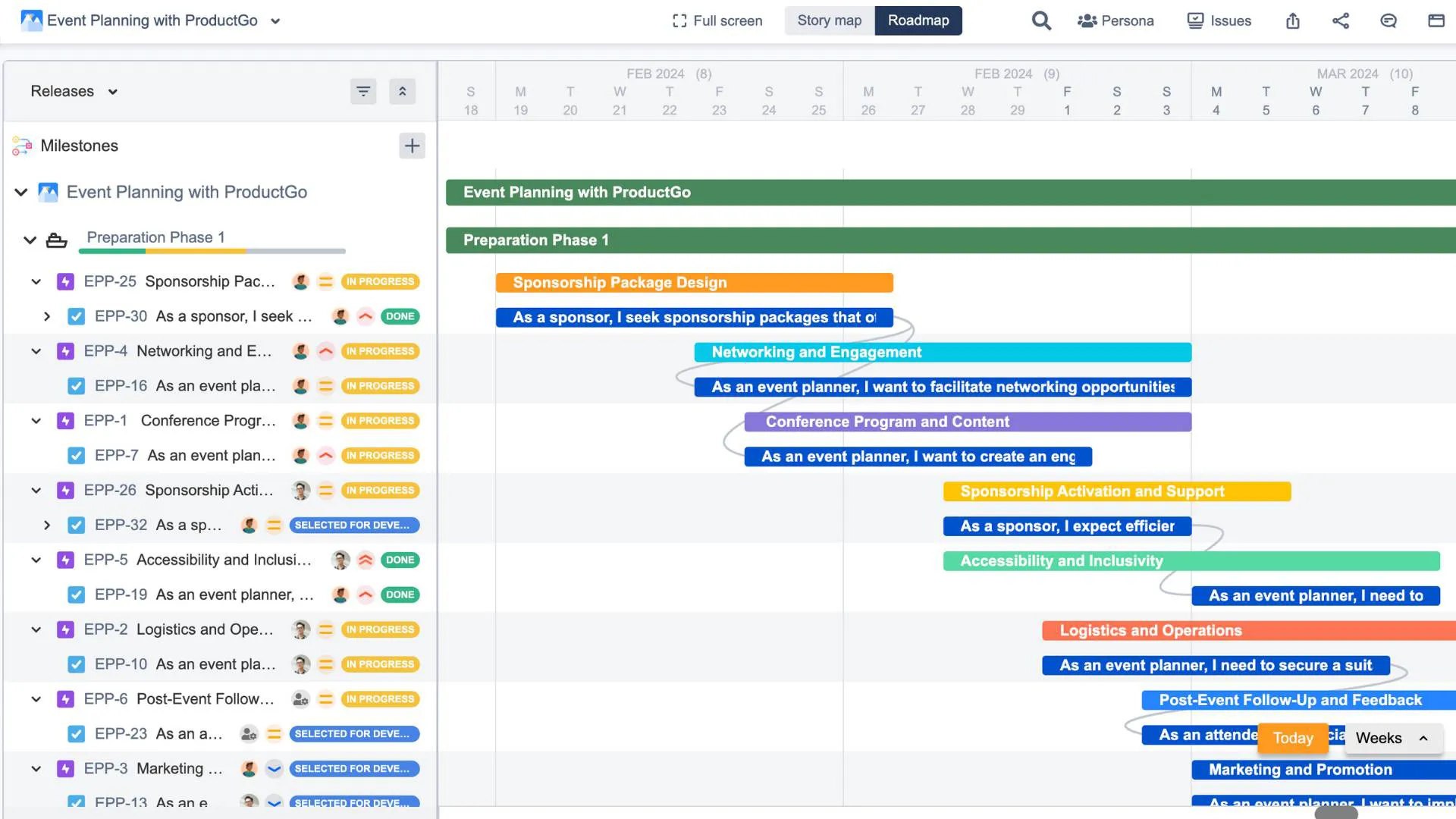
Balance Logistics with Experience: While the roadmap focuses on logistical elements like timelines and budgeting, user story maps emphasize the attendee experience. Combining these ensures a well-planned event that also resonates with the audience.
Adapting Plans Based on Attendee Feedback and Logistical Needs
Post-event feedback indicated attendees appreciated the interactive sessions but found the venue layout congested. Future planning will adapt by choosing a more spacious venue and altering the layout to facilitate more effortless movement and interaction.
Logistical adaptations included adjusting the schedule to allow more time between sessions and addressing feedback about time constraints. This change was reflected in the roadmap for the next event, illustrating the dynamic nature of combining user story maps with roadmaps.
V. Tool for Effective Event Planning
In event planning, leveraging advanced tools like ProductGo and methodologies like user story maps and roadmaps can significantly enhance the planning process. ProductGo offers a suite of features that are particularly well-suited for integrating these methodologies into event planning. It provides the following features:
- Agile Story Maps: Visualize your product backlog, prioritize features, and plan sprints.
- Roadmaps: Create a customizable roadmap within Jira, linking epics and user stories to releases and milestones.
- Portfolio Boards: Manage multiple projects and align them strategically.
Using ProductGo for Event Planning
Create a User Story Map:
- Integrate your existing user stories and epics into ProductGo’s story map.
- Arrange them in a logical flow to represent the user journey.
- Prioritize features based on user value and business impact.
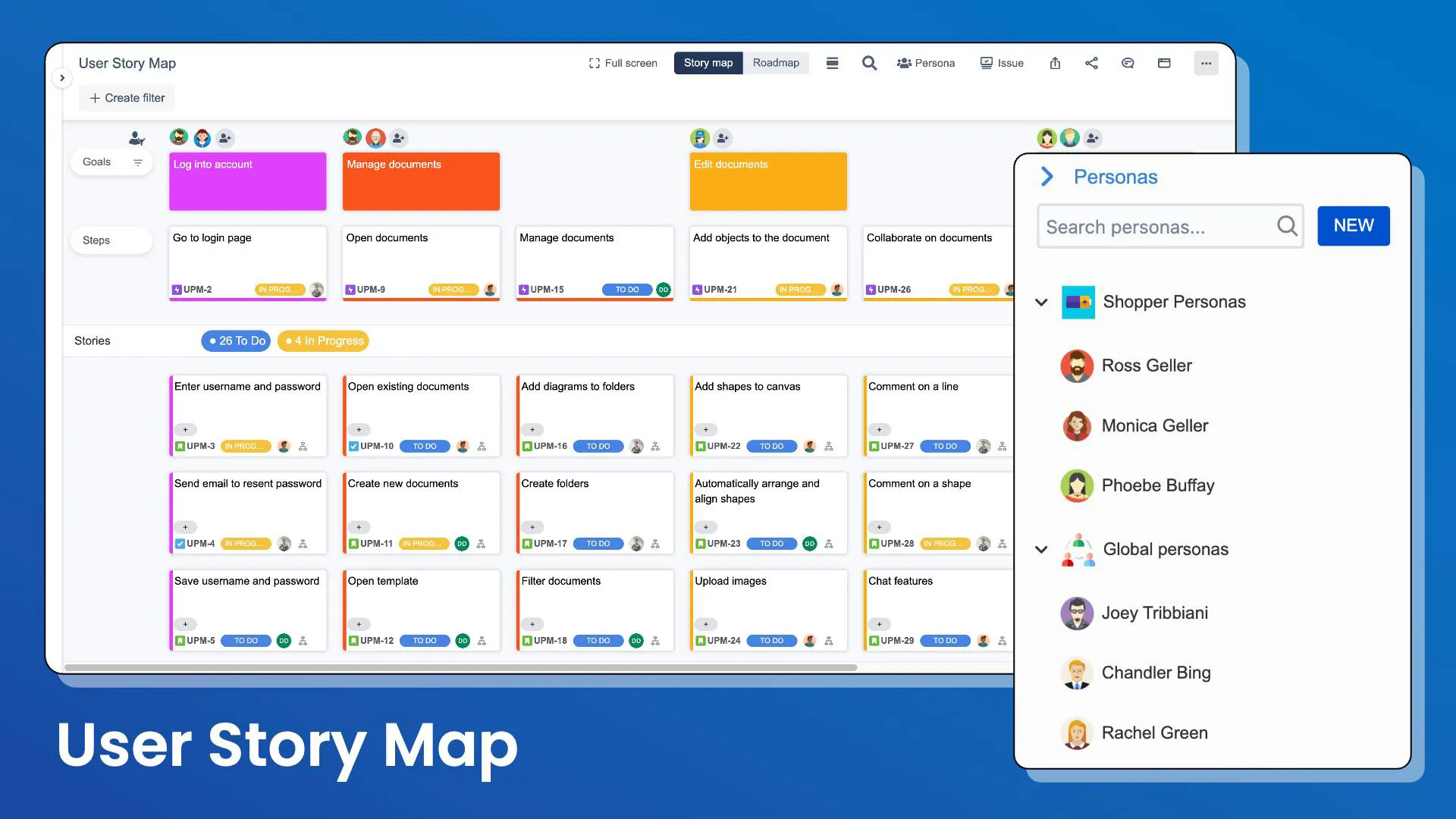
→ Try ProductGo now: Agile User Story Maps, Roadmaps & Persona for Jira
Build Your Roadmap:
- Access the Roadmap feature within the Story Map screen.
- Define product goals, releases, and milestones.
- Link epics and user stories to specific timelines.
- Communicate the roadmap to stakeholders for alignment.
ProductGo streamlines collaboration, enhances communication, and empowers your team to deliver value during event planning.
Event planning can be complex and challenging, often requiring navigational skills to address common issues that arise. Here’s a look at some typical challenges and strategies to handle them effectively:
Common Issues in Event Planning
- Budget Constraints: One of the most frequent challenges is staying within the budget. This requires careful financial planning and often creative solutions to cut costs without compromising the quality of the event.
- Time Management: Meeting deadlines and ensuring everything is prepared on time can be stressful. Effective time management, prioritization of tasks, and delegation are critical to addressing this issue.
- Vendor Reliability: Dependence on external vendors can be a risk factor. Issues like delays or non-compliance with agreements can potentially impact the event.
- Changing Attendee Expectations: Keeping up with evolving trends and attendee preferences can be challenging, especially in large-scale or recurring events.
- Technical Difficulties: In today’s tech-driven events, technical glitches can be a significant setback, from audio-visual issues to registration system failures.
Addressing Challenges with a Responsive and Adaptable Approach
- Flexible Planning: Adopt an adaptable approach to planning. Be prepared with contingency plans for venue, catering, and technology.
- Regular Communication with Vendors: Maintain open lines of communication with all vendors. Conduct regular check-ins and confirmations to ensure they meet their commitments.
- Staying Updated with Trends: Regularly research and integrate new trends and technologies that resonate with your target audience to keep the event fresh and engaging.
- Technical Rehearsals: Conduct thorough technical checks and rehearsals to minimize the likelihood of technical difficulties during the event.
Conclusion
The mastery of event planning lies in the delicate balance of meticulous organization and creative flexibility. By integrating user story maps and roadmaps, we gain a powerful toolkit that streamlines the planning process and ensures events are resonant and fulfilling for attendees. This guide has walked you through the essential steps and considerations, highlighting the importance of attendee-focused planning and adaptive strategies.
Remember, every event is a unique story; you can tell it brilliantly with these methodologies. Whether you’re orchestrating a small gathering or a grand-scale event, the principles outlined here will guide you toward achieving exceptional and memorable outcomes.

